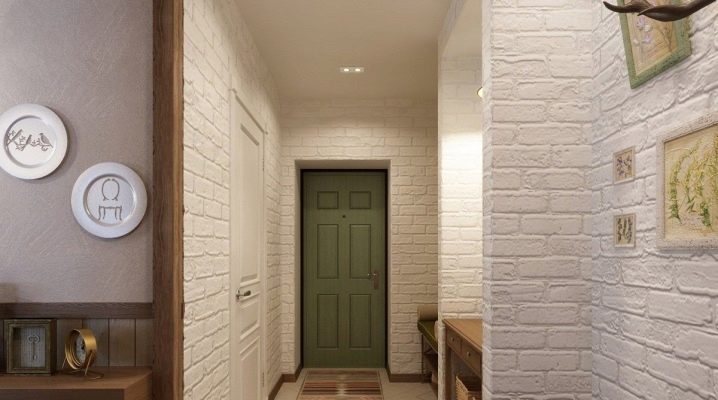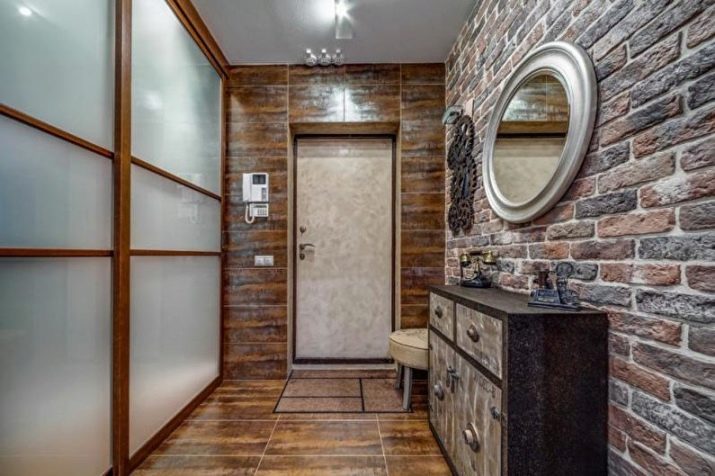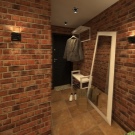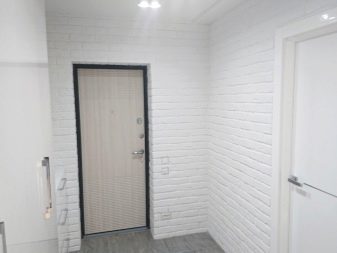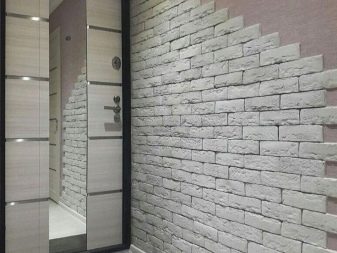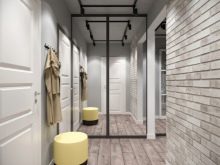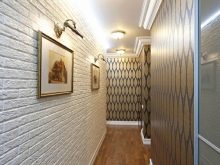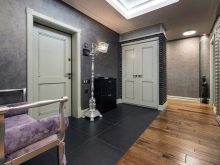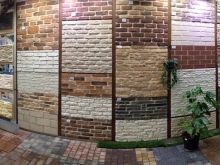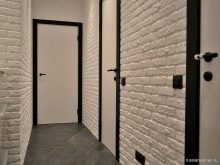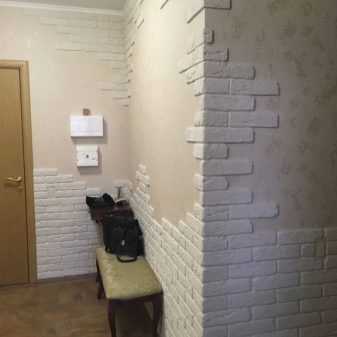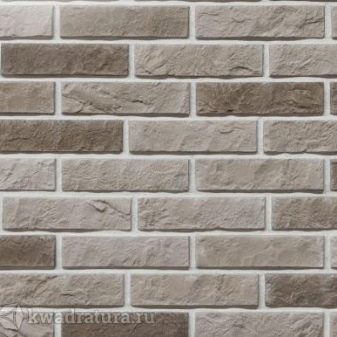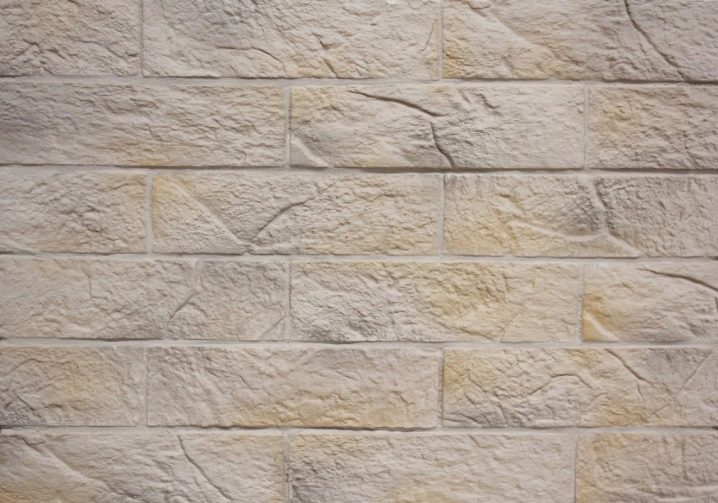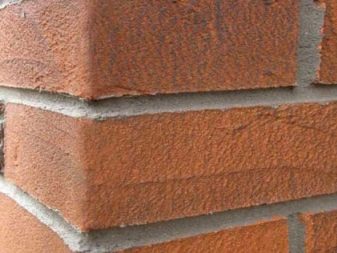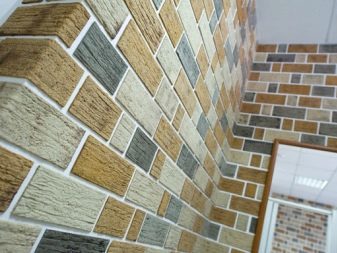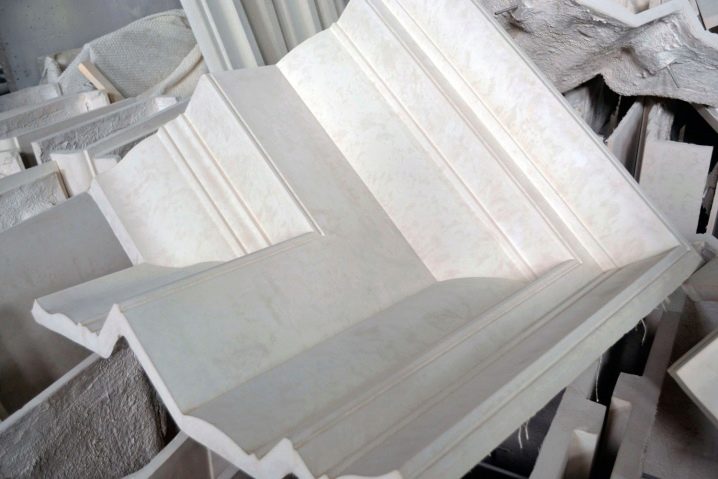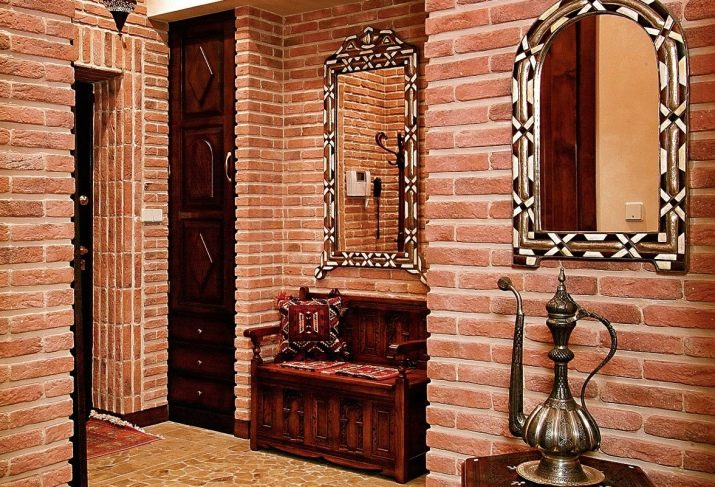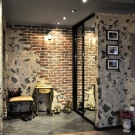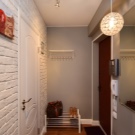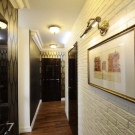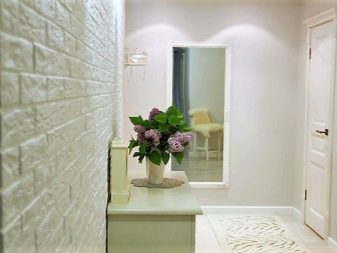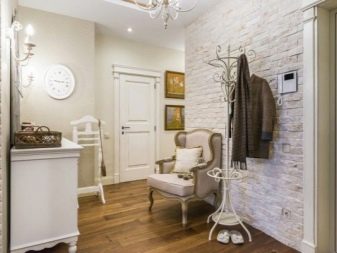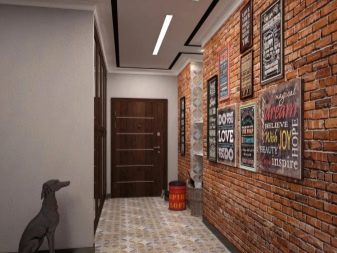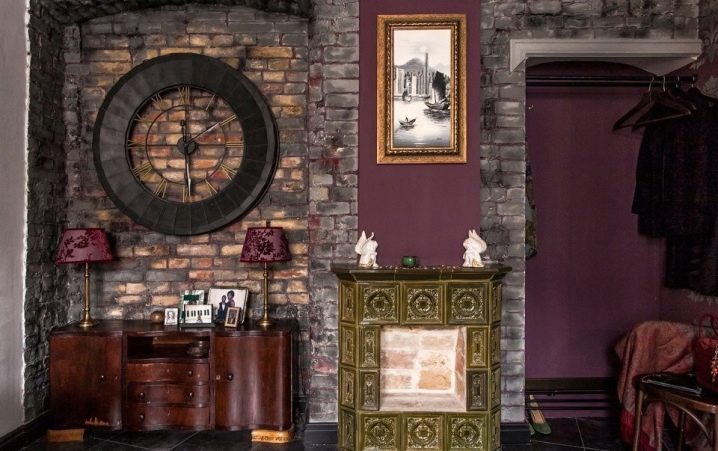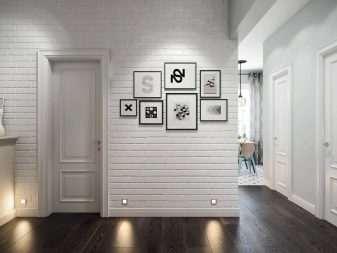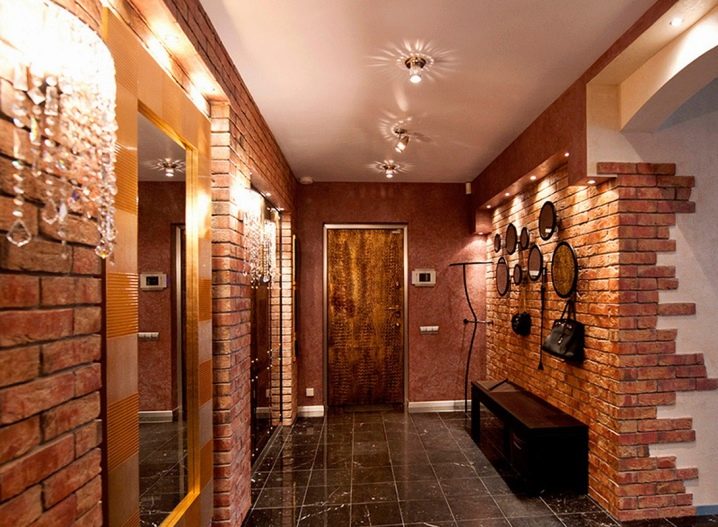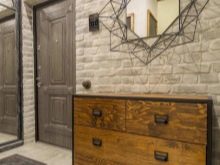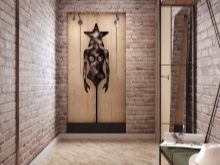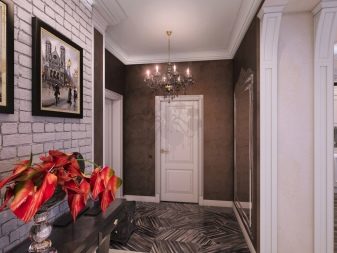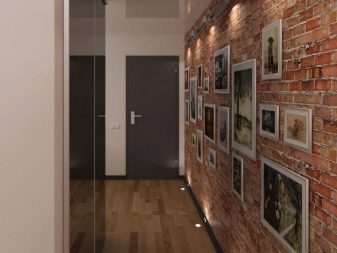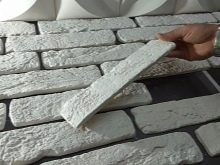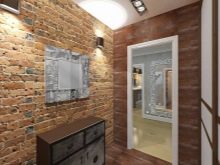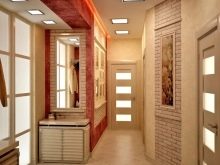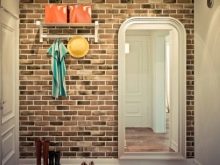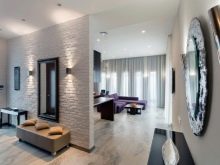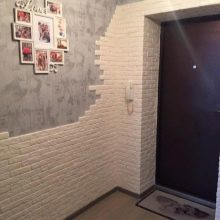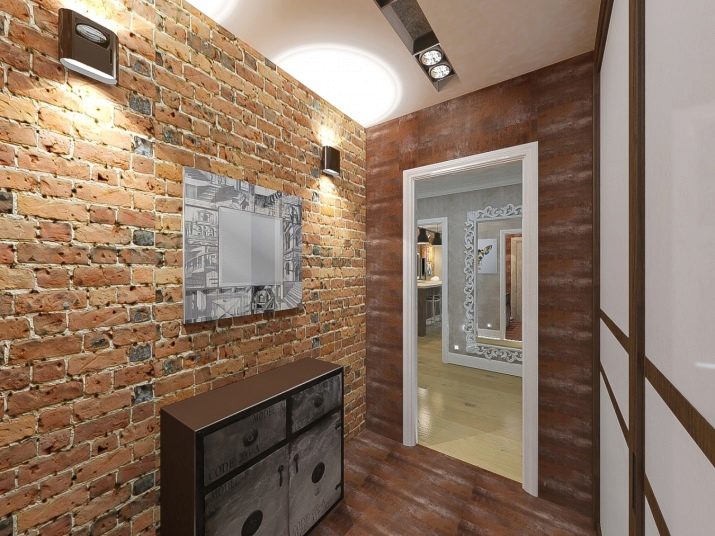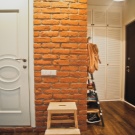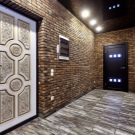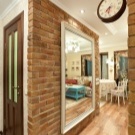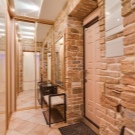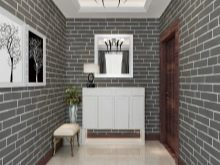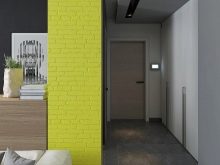Decorative brick in the hallway
The use of decorative bricks in the design of hallways allows you to create a unique charm in the entrance area and set the general mood of the room. An interesting texture, variability of colors, a variety of styling schemes - all this allows you to use the material in a variety of styles. Let's dwell on the features of this decorative element.
Advantages and disadvantages
The hallway is the first thing that a person sees when entering a house. That is why special attention should be paid to its design. In recent years, decorative bricks have been very popular - such a design allows you to emphasize the impeccable taste and sense of style of the owners of the living space. Decorative brick is a modern finishing material. It is very popular due to its durability, as well as the variety of shading solutions and textures.
It is allowed to use such a finish in a variety of directions: classic, modern loft and high-tech, even an ecological corner. At the same time, you will be able to arrange a stylish interior with your own hands, even without having the skills of brickwork.
Artificial brick is used to decorate corridors, hallways, halls, as well as the foyer. By its characteristics, it resembles a stone, but weighs much less. It is easy to install, environmentally friendly, has high heat and sound insulation characteristics. Such bricks serve faithfully for a long time without losing their aesthetic appearance. They can be used to create various architectural compositions, design doorways, columns, corners and entire walls.
The disadvantages of the material include a rather high price - such a cladding will cost more than plaster or wallpaper. At the same time, the durability of artificial bricks is lower than that of natural stone. However, there are much more pluses.
- The variety of shading solutions and textures allows you to implement the most original and creative designs in the hallways.
- Decorative brick is easy to maintain. It does not take much time and effort to care for, and any dirt can be easily removed with a regular damp cloth.
- The covering is lightweight, so the walls do not need additional reinforcement. You can even mount such a cladding on partitions.
- The service life of decorative bricks is two to three decades. In the absence of strong mechanical stress, it does not crack, and does not fade under the influence of ultraviolet rays.
- Decorative cladding with brick panels allows you to create additional insulation in living rooms from extraneous sounds and retain heat.
- Artificial brick is highly maintainable. In case of damage, you can simply replace one damaged piece - without the need to dismantle the entire masonry.
And finally, the advantages of wall material include a wide range of decorative bricks. In stores, the product is presented in a variety of design options and at different prices.
Therefore, each person can choose the optimal solution for his hallway room, taking into account personal tastes and financial capabilities.
Description of species
When facing a corridor under a brick, different materials are used. Each imitation has its own advantages and disadvantages. Let's take a closer look at the most popular solutions.
Gypsum
The popularity of gypsum bricks is explained by its natural texture, large selection of colors and maximum similarity with real bricks. Such material is used to decorate walls or individual areas. It is in demand when facing window and door openings.
The advantages of gypsum stone include:
- aesthetic appearance;
- light weight;
- ease of installation;
- environmental safety;
- affordability.
With such an impressive list of advantages, imitation of gypsum-based masonry has its drawbacks:
- susceptibility to water;
- the material does not withstand mechanical damage well - it can crack or burst, however, any damage that occurs during operation can be easily eliminated: the deformed tile can be simply removed and replaced with a new one.
Clinker
This tile is made using the same technology as a full-fledged brick. The only difference is in size. Usually clinker thickness varies from 7 to 18 mm - thanks to this, you can choose the optimal model for cladding both load-bearing walls and partitions. A material made from fired clay has obvious advantages:
- increased strength;
- shock resistance;
- chemical and biological inertness;
- environmental Safety;
- decorative texture;
- natural color scheme;
- a wide range of shading solutions.
The disadvantages of clinker bricks include only its heavy weight compared to slabs made of plastic, acrylic and gypsum.
Flexible
By its appearance, flexible tiles are similar to individual bricks. It is made in the form of separate elements of standard sizes, which may vary from manufacturer to manufacturer. The facing material is made of acrylic with the addition of dyes, pigments and sand. The main advantage of this design is that corridor corners, uneven surfaces and complex elements can be laid out with it.
The performance characteristics of the material are exceptionally high. It is distinguished by:
- long service life;
- light weight;
- ease of installation;
- resistance to fire and high temperatures;
- environmental Safety.
Perhaps the only drawback of flexible tiles these days is the huge number of fakes on the market.
GRC is gaining more and more popularity - it is a conglomerate of dissimilar materials. It is made from cement with the addition of glass quartz fibers. Compared to conventional bricks, it is characterized by a lower thickness and low weight. The benefits include:
- density;
- immunity to moisture;
- environmental safety.
However, the products have an impressive weight, so the range of application is limited by the load-bearing walls.
Design options
Not only wall surfaces, but also arches and openings are faced with imitation bricks in the corridor. In addition, they can be used as independent interior items.
Due to its stylish appearance and natural texture, decorative bricks can be used in a variety of stylistic solutions, ranging from Provence and classics and ending with a loft.
We list the most common finishing methods.
- Romance. There is an opinion that brickwork indoors gives the impression of an unfinished street wall. However, it is not. With the right choice of texture and color scheme, you can create a truly touching and airy interior. If you want to get a romantic atmosphere, you should use panels of gentle, soft shades. Creamy and beige tones are relevant here, they are combined with rich illumination, which creates a play of light on the surface of the walls.
For a larger entourage, figurines and flowers are used as decorative elements.
- Pop Art. This style is chosen by emotionally open people. Therefore, mainly bricks of contrasting red-brown shades are in demand here. They are complemented by rich furniture colors and inserts of orange and yellow colors.
- Gothic. Modern Gothic has long ceased to resemble gloomy and dull medieval castles. Today, brick of several colors is used to create a style. For example, they resort to alternating rows of milky, white and black shades. And for maximum immersion in style, the cladding is complemented by glossy furniture and ceiling beams.
- Scandinavian style. One of the most popular these days, brickwork becomes the main accent in such an interior. Only natural light shades are needed here, bright contrasts in such interiors will be inappropriate - light or black panels look best. At the same time, the furniture that is located in the hallway must fully match the color of the brick and make up a single composition with it. A couple of paintings or a living flower will help smooth out the severity of the interior.
- An unusual hallway interior can be created in ethnic style. This design combines laconicism and bright colors. Here ocher brick is appropriate, most often it is combined with ceramic inserts.
Souvenirs and figurines in the form of artifacts should become an obligatory element of the decor.
- And of course, the brick wall will become the basic element of the loft interior. In the space of the hallway, decorated in this way, a minimum of decorative elements is used. The surface is made of a monochromatic homogeneous stone with uneven edges and a pronounced texture. Preference is given to dark gray or light tones without accents.
The scope of use of decorative bricks is wide. However, you need to understand that regardless of the chosen interior solution for the hallway, a wall made of stone imitation should harmoniously fit into the overall design of the house. This is the most important thing, otherwise the dwelling will take on an untidy look.
Selection Tips
Nowadays, any hardware store offers many types of coatings for hallways. The main rule for choosing decorative bricks is to make the entrance area in the house more stylish and effective than it was before. The owner of each home wants guests to be enchanted by the exterior of the interior. That is why important factors must be taken into account when choosing a brick.
- The general layout of the space, lighting and furnishings - these factors directly affect the choice of stone color. In dark rooms, it is better to give preference to light colors. And if the hallway has its own window, then the color scheme can be anything.
- The concept of a stylistic solution to the interior. Also directly related to the choice of texture and panel palette.
- Air humidity and temperature in the hallway. If the corridor communicates directly with the street, it is better to give preference to materials that are resistant to high humidity and temperature fluctuations.
- Financial opportunities. Clinker bricks will always be cheaper than acrylic and gypsum bricks.
- The material from which the partition is made. Any materials can be used for load-bearing solid partitions. If the walls are made of plasterboard, then to imitate masonry, it is better to take lightweight panels.
Combination with wallpaper
The combination of wallpaper and brick looks very original in the interior of the hallway. It allows you to emphasize the texture of facing materials, but at the same time requires special attention to the tint solution. In country and high-tech rooms, wallpaper is matched to the stone. For modern and pop art, contrasting tones are relevant. For combination with brick, use plain wallpaper. Canvases with patterns and prints, especially large ones, are inappropriate here.
In addition, designers do not recommend combining decorative bricks with vinyl surfaces.
When several textures are combined, the brickwork is usually limited to one wall, and the wallpaper is glued to the other three. You can also use combined combinations.
- Horizontal - in this case, the lower part of the wall is finished with a stone, as a rule, by a third or half. The top is covered with wallpaper.
- Vertical - in this case, window openings and doors are distinguished with bricks.
- Zoned - provides for the decoration with bricks of individual zones, niches and protrusions of the entrance part.
Finishing technology
Laying of decorative bricks on the walls of the corridor can be done according to several schemes.
- Chain - typical masonry. The panels are joined sequentially so that each next row is overlapped by a third of the body.
- Fish bone - the brick is laid perpendicularly.
- Book binding - in this case, the docking is performed by uniform alternation of horizontal and vertical fasteners.
When using decorative bricks, there are several points to consider.
- Before installation, be sure to level the surfaces - for this, putty, plaster and primer are used.
- Choose high quality tile adhesive from reliable manufacturers. There is no need to save on adhesive solution, otherwise the decor will not last long on the wall.
- It is necessary to carry out the laying from the corner of the room in the direction from top to bottom. If you lay it out from the bottom up, then the bottom rows can get dirty with glue.
- Use special corner panels to decorate corner areas. They allow you to accurately handle the most difficult areas.
- If the gap between the rows of bricks is too wide, do not be upset. It can look very stylish.
Beautiful examples in the interior
The entrance hall is the very first interior room into which guests come to the apartment. That is why the use of imitation brick in the corridor is considered an effective and reasonable solution.
This type of facing material is organically combined with any stylistic interior design, the most important thing is to choose the right style of decoration, the location of the masonry and the color scheme.
So, white brick cladding is relevant when creating an urban loft style, restrained scandi, a spectacular high-tech and ecological interior. Such masonry is organically complemented by wallpaper, plaster and other types of finishes.
In addition, the white color is an excellent opportunity to visually expand the boundaries of the room, this is especially true in small hallways of typical modern high-rise buildings.
Red stone is relevant for a loft. Although, if desired, it can even fit into classic decors.
Brick trim in bright colors looks most organically in spacious corridors. In small spaces, the material is used partially to create accents on one wall.
In stores, you can pick up decorative bricks in a variety of shades: from light pastel to rich dark. If desired, dark and light stones can be staggered, create a gradient, depict unusual patterns and combinations.
We hope that our photo selection will help you find stylish ideas for renovating a hallway "like a brick".
